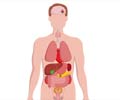Genomic technology called high-throughput sequencing (HTS) has revolutionized gene discovery and disease understanding in autism.

Dr. Buxbaum is co-founder and co-director of the Autism Sequencing Consortium (ASC), a large multisite collaboration which is a model for future research. The co-authors of the article are Mark J. Daly, Broad Institute and Harvard Medical School; Bernie Devlin, University of Pittsburgh; Thomas Lehner, National Institute of Mental Health; Kathryn Roeder, Carnegie-Mellon University; Matthew W. State (co-director), Yale University, and the ASC.
HTS is a revolutionary new technology that allows scientists to obtain the sequence of all 22,000 human genes and the entire human genome in one experiment. This provides an unparalleled look at an individual's genetic makeup and allows for gene discovery and for genetic testing.
"HTS shows us that there are not just a few mutations, but potentially hundreds of mutations that are linked to autism," said Dr. Buxbaum. "By identifying the many genetic roots of this disorder, we can better understand its biology, which in turn will allow us to develop more tailored treatments for individuals. It is a transformative time for genetic research in autism."
Ground-breaking, highly reproducible discoveries identified through HTS described in the article include:
- the "staggering degree" of genetic heterogeneity in autism, which means that many individuals with autism do not share similar gene mutations;
- the identification of an increasing number of specific genes and chromosomal intervals conferring risk;
- the important emerging role in autism of both rare and "de novo germline mutations," or mutations developed in the sperm or ovaries of parents and passed on to children; and
- gene loci associated with autism that overlap with gene loci associated with other illnesses, such as intellectual disability and epilepsy.
Advertisement
The article spotlights the successful work of the ASC, founded in 2010, as a model to bring to fruition an explosive gene discovery process. The ASC member sites, using WES technology also available at Mount Sinai, recently discovered six de novo mutations in autism patients: CHD8, DYRK1A, GRIN2B, KATNAL2, POGZ and SCN2A. These six genes may be targets for future treatments. Some of these discoveries were accomplished rapidly because the Consortium's 25 research groups, located around the world, combined their data and shared it before publication. As a result, they conducted four large studies using 1,000 families.
Advertisement
Source-Eurekalert















